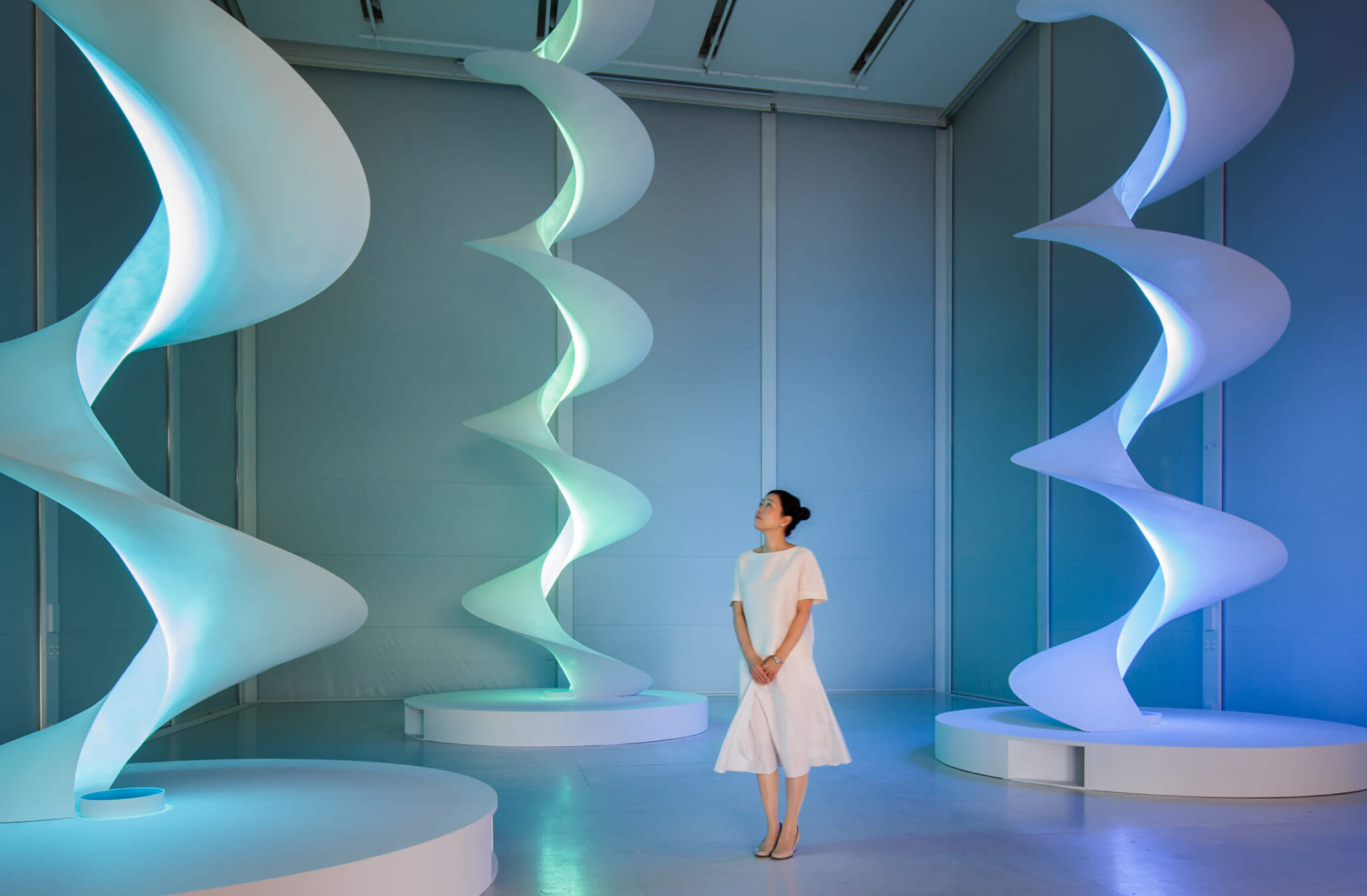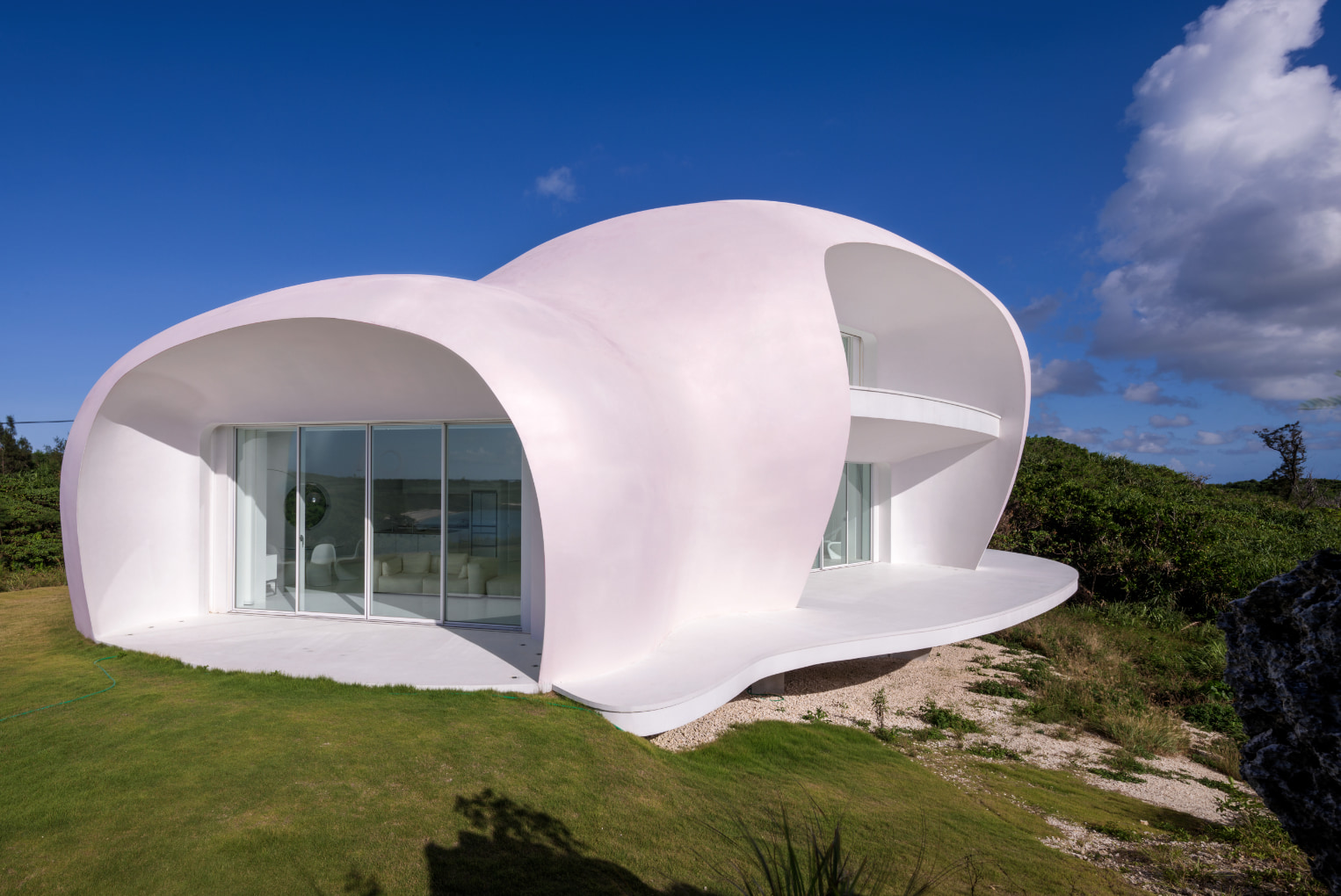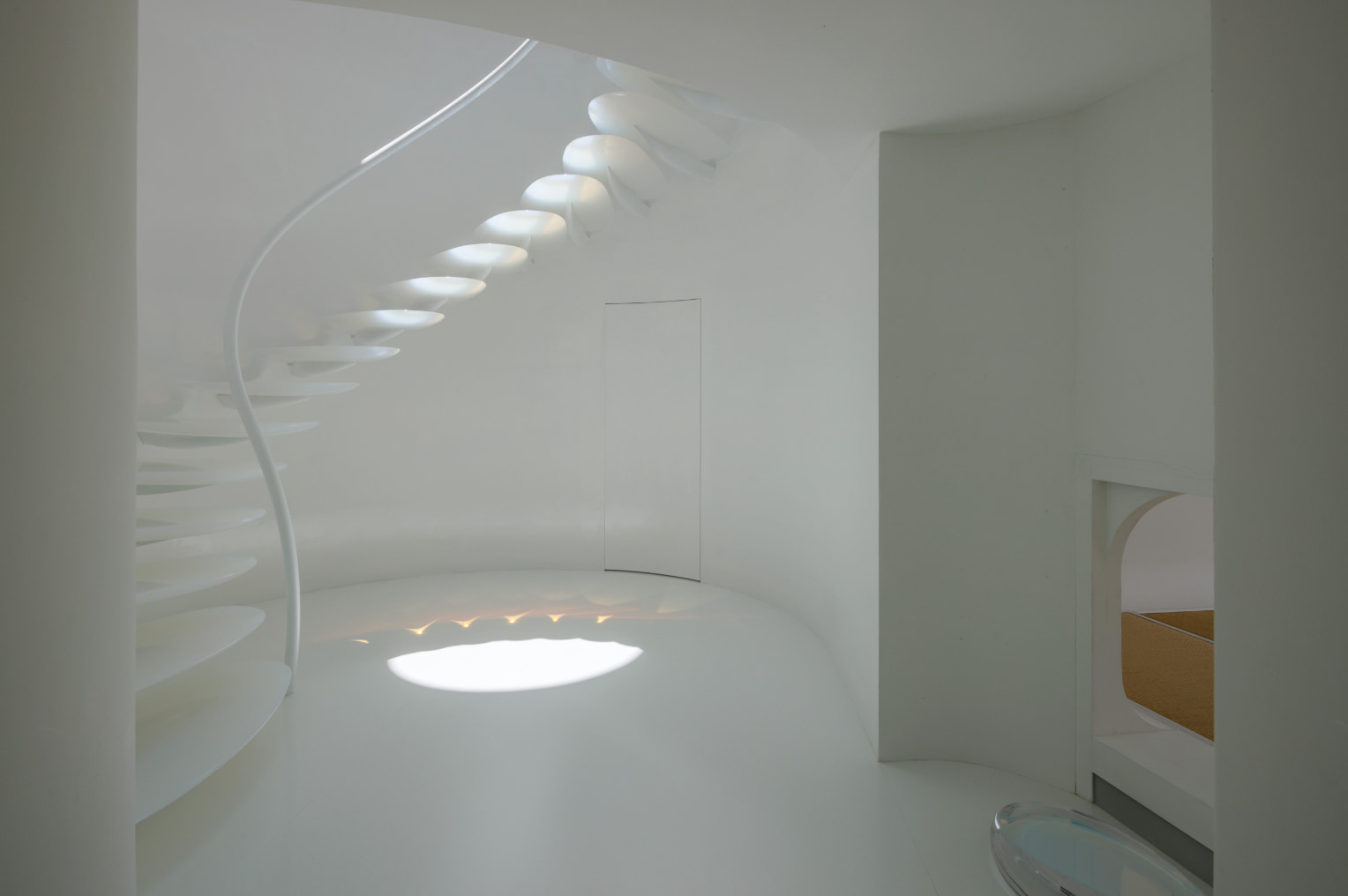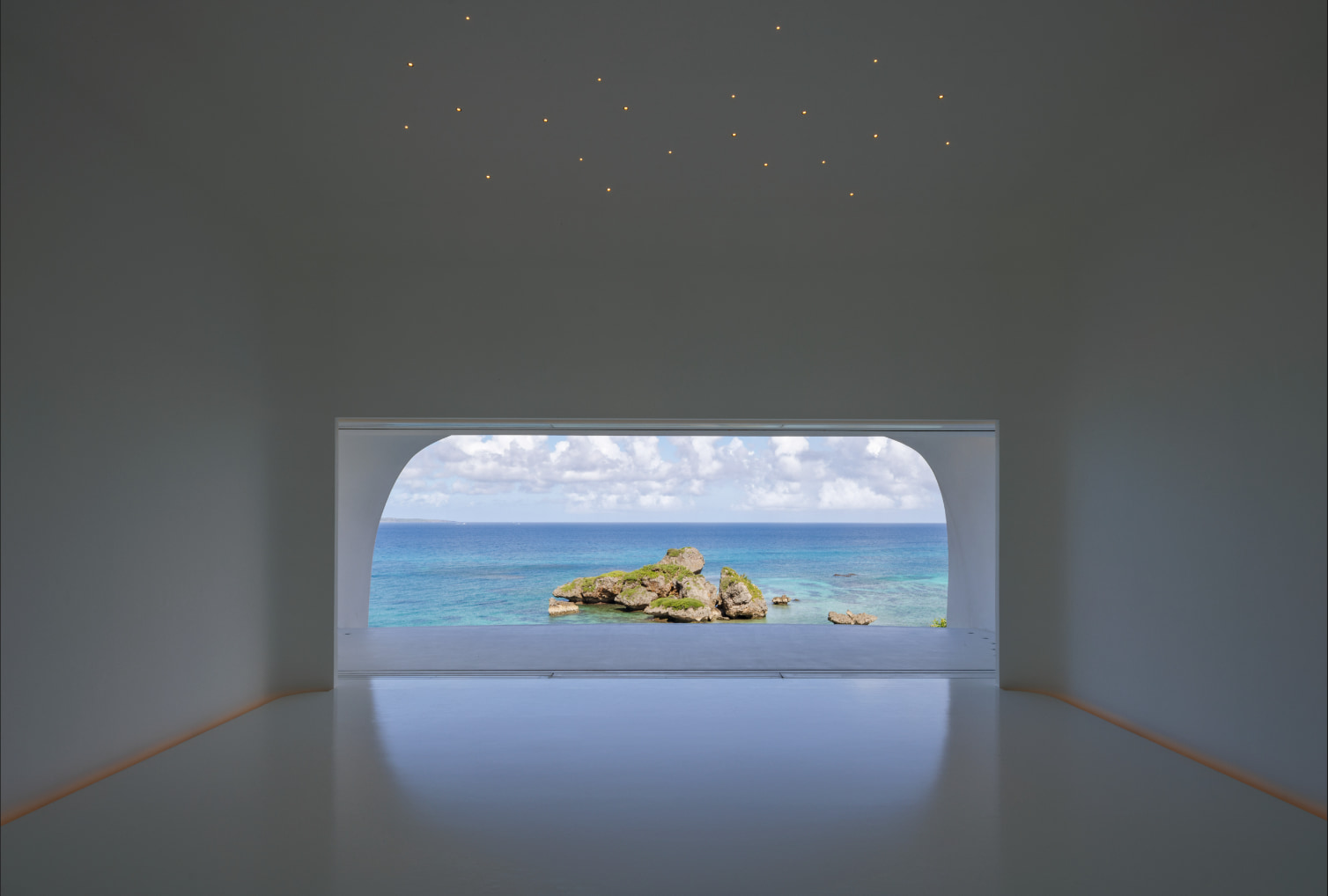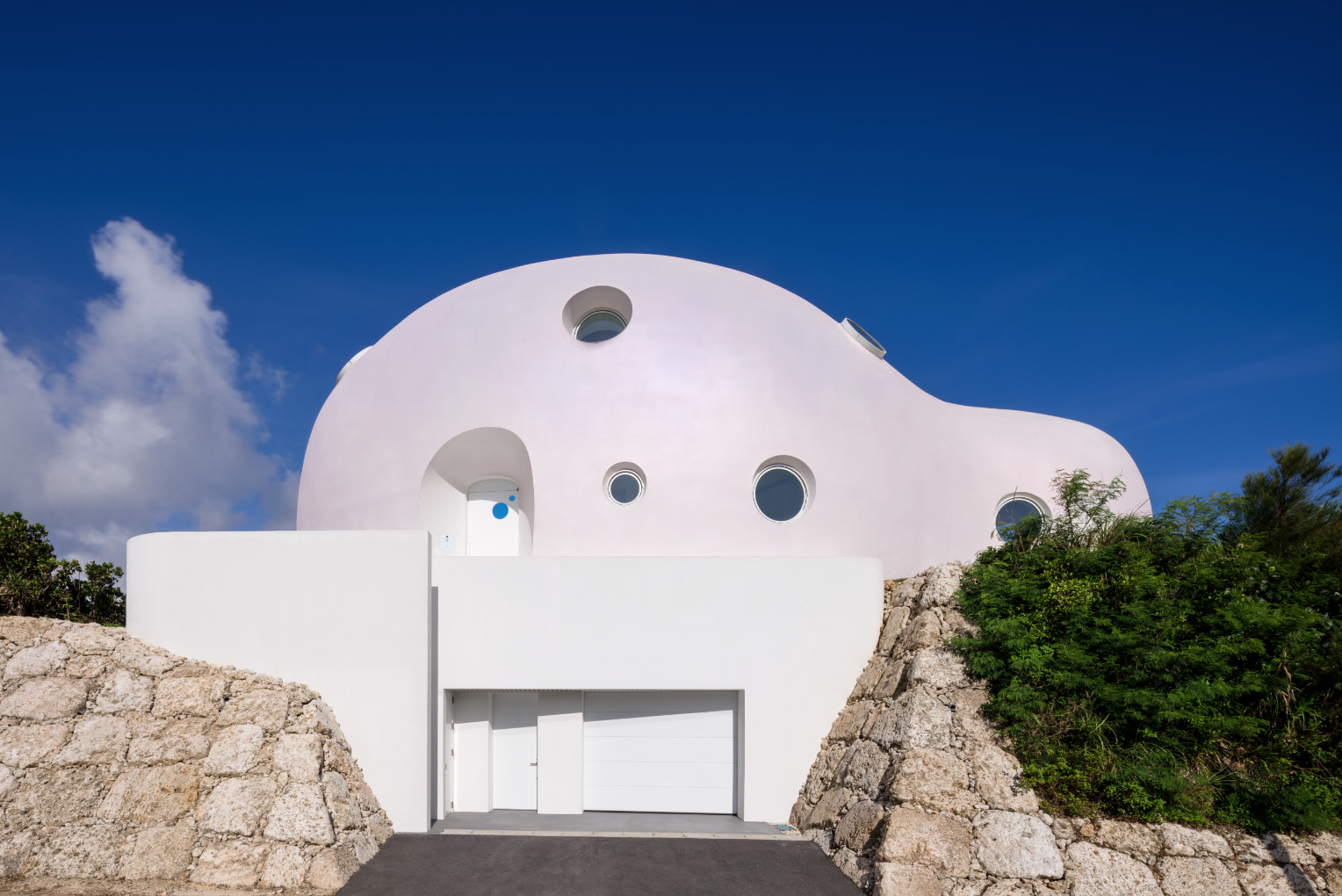Mariko Mori’s house appeared across the internet in late 2022, a shining, pearlescent masterpiece. Located on Miyako Island in Okinawa, Yuputira House is a mimicry of sea coral amid lush greenery overlooking the sea. It has abalone-shaped stairs of translucent fiberglass that curve up toward the sun, a studio that looks out over the vast ocean and a gleaming white interior. Yuputira House is the definition of luxury and elegance, the product of 15 years of planning and refined taste.
Mori, however, is not simply the designer of a house. Her lauded artistic career has seen her move from painting and photography through to sculpture via themes including feminism, science, technology and ritual.
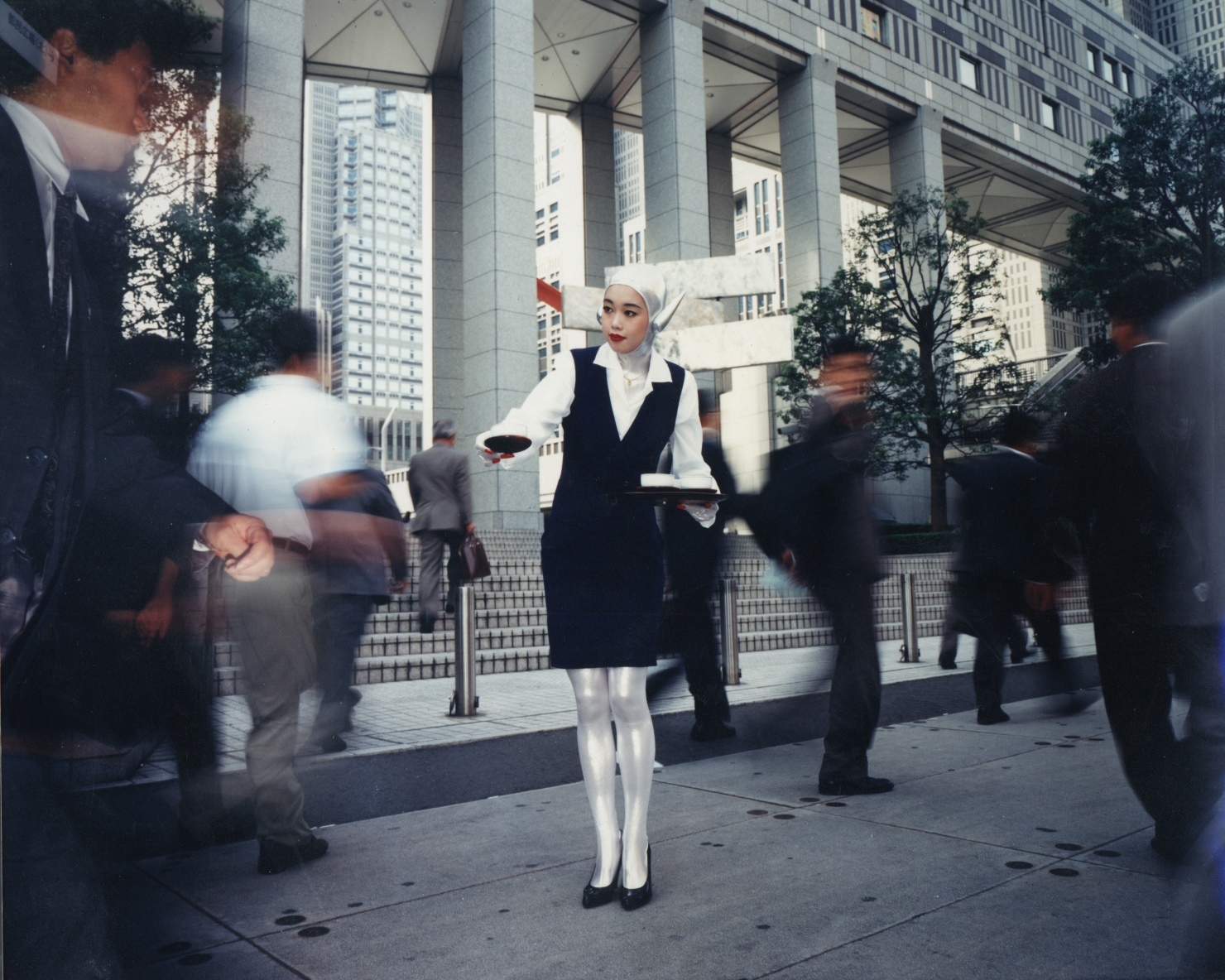
“Tea Ceremony I”, 1994
A Serendipitous Switch from Fashion to Art
In a recent interview for The New York Times, Mori revealed that she originally wanted to be a fashion designer, enrolling in a course at Byam Shaw School of Art (now Central Saint Martins) in London. When she arrived, she was surprised to find there were no sewing machines, only then discovering that she’d accidentally enrolled in an art course. She called her mother, an art historian, who encouraged her to try it for a year.
“I listened to my mother,” Mori says with a laugh when we speak over Zoom during the mid-August Obon holiday period. It was a good thing she did, as she fell in love with art. “With fashion, you have to cut things in a certain shape to fit the body,” she says. “But art is free.”
After completing another degree at London’s Chelsea College of Art and Design (now Chelsea College of Arts), she continued her studies in New York. During this time, she honed her vision, realizing that Japan was — and remains — behind its counterparts in terms of gender equality. This led to her globally acclaimed 1990s photography series “Tea Ceremony,” in which she placed herself as the model in a range of patriarchal scenes with a twist.
In the series, she cosplayed as an alien serving tea — in one photograph to no one and in another, surrounded by disinterested salarymen — in protest against these gender ideals. She became the buzz of the scene and continued the series until the mid-’90s. Since then, each of Mori’s phases has been revered by fans and insiders alike.
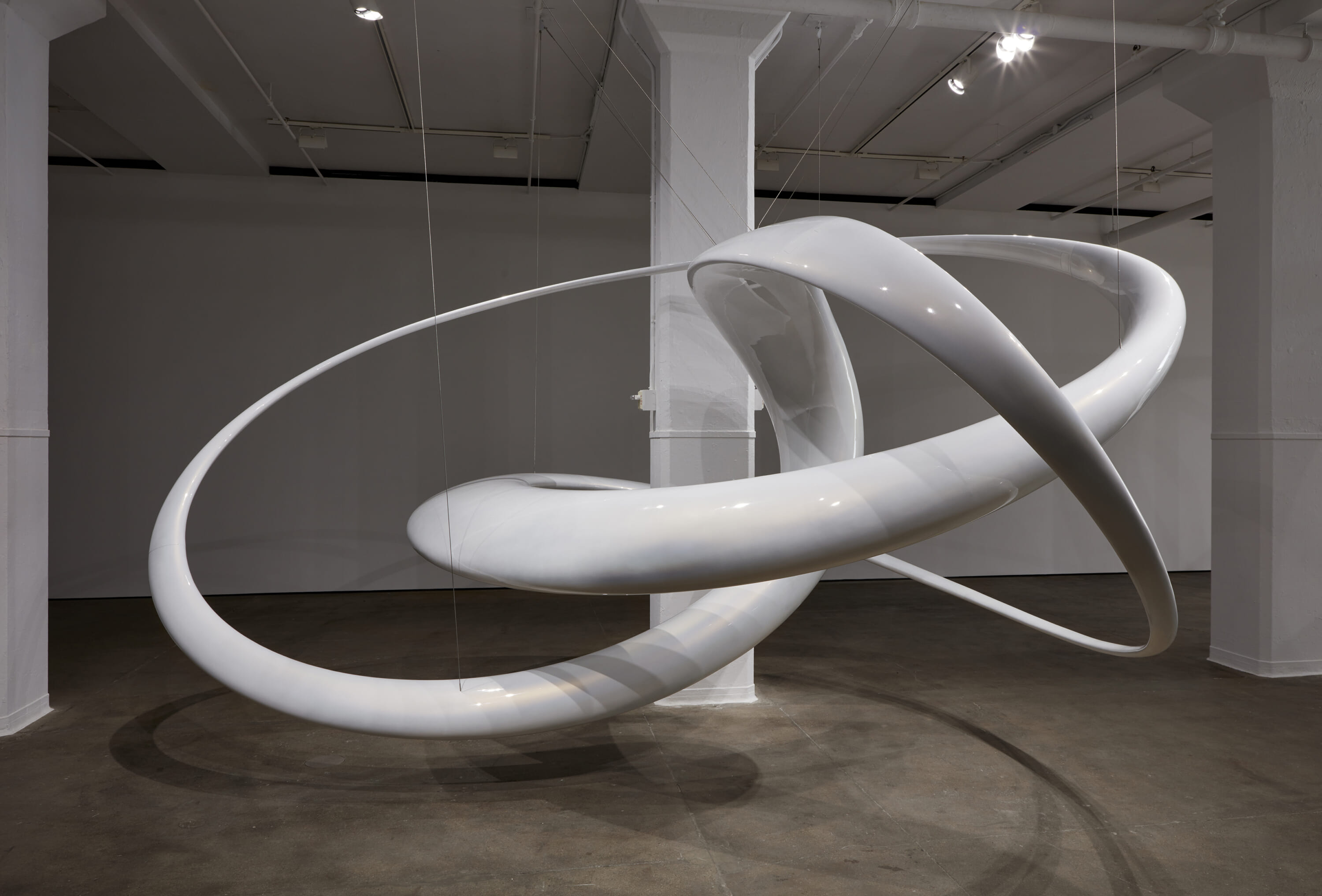
“Ekpyrotic String VI.” 2016-2017
Installation at Sean Kelly, New York in 2018
Photo by Jason Wyche
©Mariko Mori
Mori’s Designs Infuse Art with Technology
Her work beyond photography harnesses her love of mathematical concepts and practices observed through her close relationship with her inventor father. “There were only two — huge — supercomputers in Japan in the early ’70s,” she says. “Seeing the numbers being input into the computer, they became so abstract. It was like working in sci-fi.”
This piqued her interest in technology. As we talk, she shares her thoughts on different scientific advancements, telling me how she hopes we can develop teleportation one day. Her artworks from 2000 and beyond, be they sculptures or interactive experiences, often use technology in one form or another.
The first to do so was “Wave UFO” in 2003, which saw her collaborate with a team of multidisciplinary engineers to design a sleek, retro-futuristic spaceship. The interactive experience had people climb up a set of lily pad steps into the structure. There, they would take a seat in Technogel chairs, be attached to electrodes and then be invited to watch their brainwaves projected onto the ceiling, next to the brainwaves of the two others also seated inside.
For her permanent installation on Japan’s art island of Teshima, placed there in 2011, she joined forces with Japan’s Institute for Cosmic Ray Research to create “Tom Na H-iu,” which she completed in 2006. Ten years later, Mori’s sculpture series “Cyclicscape” focused on Mobius strips, elegantly twisting and twirling. This was designed using 3D printing, a technology Mori embraced when it came out and still utilizes today. “Technology is the tool to realize an idea,” she says.
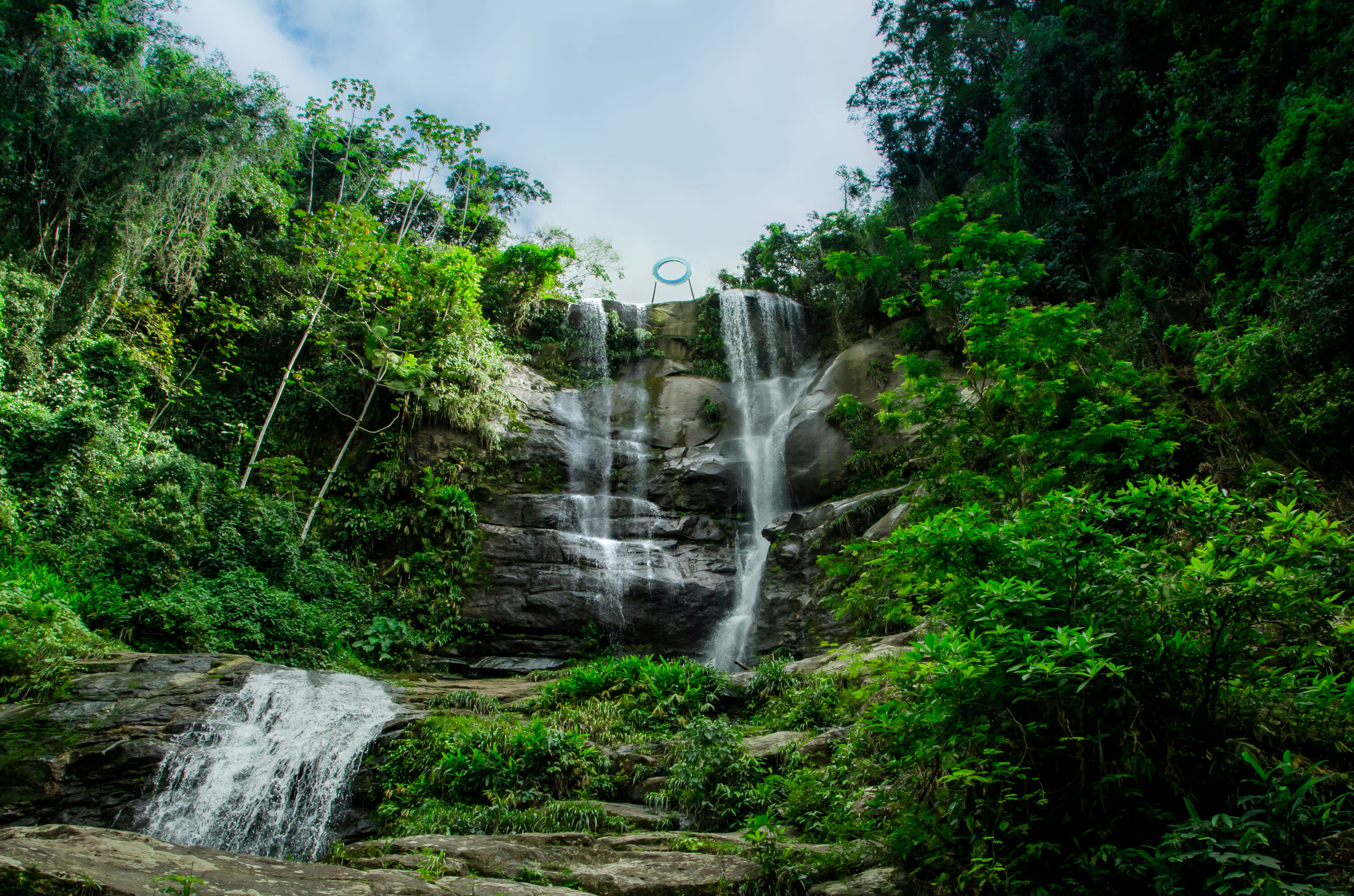
“Ring: One with Nature,” 2016
Installation on Véu da Noiva waterfall, Rio de Janeiro, Brazil
Photo by Stephanie Leal
© Faou Foundation
The Faou Foundation Connects Communities with Nature
Since 2010, Mori has been the driving force behind the Faou Foundation, an NPO she founded that’s dedicated to the environment and its guardians. Faou, a neologism dreamed up by Mori that means “creative force,” places the artist’s works on six continents. “The artworks are an offering to the nature gods,” she explains. “We also host community educational programs to explore dialogue between art and nature, and highlight natural resources for future generations.”
At the time of writing, there are two artworks and related educational programs in place: one on Miyako Island, Japan, dedicated to the coral and ocean; and one in Rio de Janeiro, Brazil, dedicated to the waterfall and rainforest. Another, in Ethiopia, is on the way and will honor shared human lineage.
In the wider context of sustainability and global heating, I wonder how useful the artworks are in practice. But Mori is passionate about their value, having witnessed it with her own eyes. Having a site-specific installation, she tells me, works to instill a sense of pride and ownership within each community.
Each piece reacts to nature. For example, Brazil’s “Ring: One with Nature,” installed in 2016, sees the sun shine through its heart on the day of the winter solstice. Miyako Island’s “Primal Rhythm: Sun Pillar,” installed in 2011, also aligns with the sun on the winter solstice.
Yuputira House and Mori’s Secret
Just a 10-minute walk from “Sun Pillar” stands her own Yuputira House. A beacon of shining white amid ample nature, the house is a reflection of Mori herself, who has worn the shade exclusively since a spiritual awakening in the late 1990s.
I ask her how, even though her house is designed in tribute to nature, she can justify destroying the land to build on it. “I tried to preserve the rock and move it within the land,” she says, emphasizing that she consulted with local people before making any decisions or altering the environment. She believes this illustrates her respect for the land and community.
“After I installed ‘Sun Pillar’ in 2011, I was nearby, taking pictures,” she shares. “A fisherman came up to me and told me all about the artwork. He was talking about how when the sun moved, the light changed, and was so enthusiastic, he offered to take me closer in his boat. We went and spent time together.”
I ask when she revealed that “Sun Pillar” was actually her own artwork. She smiles: “I didn’t.”

